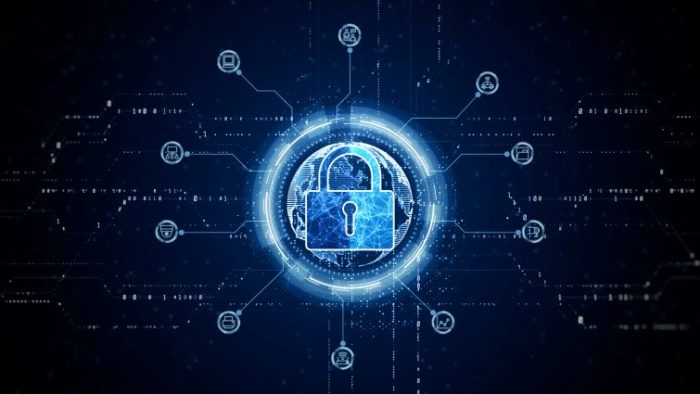5 Tips to Help You Safeguard Business and Employee Data
 Publié le 17 April 2023
Publié le 17 April 2023
Protect sensitive information with 5 tips to help you safeguard business and employee data.
Protecting your data is a crucial aspect of good data ethics for businesses of all types. This data doesn’t just include your business data. It also includes your employees’ sensitive data, such as names, addresses, and even social security numbers.
The best defense against data breaches is to have strong measures in place to help prevent them from occurring. You should also ensure you and your employees–from your new hires to senior managers–know what to do should a data breach take place.
Read on to learn 5 tips to help you safeguard your business and employee data:
How Do Data Breaches Happen?
A data breach involves someone without the correct authority and permission accessing data, most often from outside the organization. Data breaches can be costly. In fact, in 2020, the average cost of worldwide data breaches hit $3.86 million.
Unauthorized access to data can lead to business and sensitive employee data being misused. When this happens, cybercriminals can use it for activities such as theft or blackmail. They may also sell the data to another criminal.
So, how exactly do data breaches happen? Let’s look at four common ways:
Cyber Attack – Cyber attacks, such as malware attacks, can enable hackers to search your computer without you knowing. They can even record keystrokes to identify passwords and other credentials, not to mention slowing down the device’s performance.
Physical Stealing – Data breaches can also happen through someone physically stealing information from your company. This can include stealing laptops, phones, paper documents, hard drives and files. They may be a break-in or someone from inside the company.
Social Engineering – Social engineering in this context is when a criminal tricks or coerces someone into handing over sensitive information. Phishing is a good example. A common method is a criminal sending an email to an employee pretending to be someone from within the company. This is an attempt to collect sensitive information, such as log-ins and passwords.
Accidental Breaches – Human error can play a part in data breaches. An employee could, for instance, accidentally send sensitive information to the wrong email address. Or, they could leave paperwork lying around where unauthorized people can see it.
We’ve covered what data breaches are and how they happen. Now, it’s time to discuss what you can do to safeguard your business and employee data.
5 Tips to Safeguard Business and Employee Data
The tips in this section will help you prevent the occurrence of data breaches and respond should these data breaches occur. For the best results, implement all these tips for your business:
1. Educate Employees
Take the time to hold sessions on cyber security with your employees. You can contact a cyber security expert or company for these training sessions. These sessions should cover the dos and don’ts to help prevent any data breach. Employees should learn how to set strong passwords, the importance of regularly changing them, and the importance of VPN and residential proxies for work communications. Teaching employees how to spot and report suspicious emails can help as well.
In the cyber security training sessions, all employees should also be taught what to do should a data breach occur. You should know what to do if your identity is stolen.
You should also inform your employees about the company’s reporting mechanisms. Remember, you want them to inform management about any suspicious activity or event that may indicate data breach attempts or occurrences. If they don’t know whom to approach about such things, they might end up keeping things to themselves. That can lead to cyber security issues in the long run. This is why it’s important to have clear instructions in place regarding the feedback process to report data breaches.
Inform your employees that any unauthorized sharing of data will be taken seriously. Outline the disciplinary measures you will take for unauthorized software and data access. You should also take the time to educate employees regarding the best ways to use web browsers securely, as well as encourage them to learn the differences between different browsers — like Brave vs. Tor or Chrome vs. Firefox — to ensure responsible and informed online behavior.
Sometimes, data breaches happen because of an employee’s lackadaisical attitude. But if you inform them beforehand there are consequences for their actions, not only for the company but for their colleagues’ personal information, they are more likely to take the necessary precautions.
But let’s say that despite your best efforts, a data breach happens. Don’t adopt a wait-and-see attitude. Call a meeting with your employees and quickly go through your company’s security policy. Your security policy will clarify what is expected of everyone within the company. It includes key elements of ethical data usage such as confidentiality, integrity, and data availability.
2. Encrypt Data Before Sending
To keep business and employee data safe, it’s good practice to encrypt it before sending. This applies when sending data through internal systems as well as external systems.
There are two types of data encryption; data in transit and data at rest. Data at rest means precisely that. The data is sitting there in your system waiting for you to access it. It simply refers to the data you store on your computer and servers. Data in transit, on the other hand, is the data that you send. This could be through an email or your business’s internal system.
When you encrypt data, you convert it from readable text, known as plaintext, to something that cannot be read, known as ciphertext. This encoded data can only be read by someone with a decryption key. This method of cybersecurity does not necessarily stop someone from stealing the data. Instead, it makes any stolen data worthless.
You will normally need to purchase specialized software or tools to encrypt your data. As part of your security plan, it is a good idea to be a bit selective about what data you encrypt. This is because encryption slows down data processing. If you’re a large organization, encrypting absolutely everything will serve to be costly, time-consuming, and complicated.
Most email service providers make it relatively simple for users to increase their email security. This means you don’t have to possess the most wanted technical skills to take advantage of encryption.
If your business uses a paid Gmail service, for example, you might be able to access its S/MIME service. The screenshot below, taken from Gmail Help, gives more information about encrypting emails sent through Gmail:
Using S/MIME certificates will allow you to encrypt your emails. This will help you minimize email security incidents.
3. Back Up Data
Business and employee data can get wiped through server crashes or natural disasters. The image below shows the alarming reality of the risks of losing data to ransomware, as well. You will notice that only 8% of organizations recovered all of their data after paying a ransom.
These instances only highlight the importance of backing up data. If you regularly back up your data, you can easily recover it in the event of breaches and other security incidents. Besides, when you have copies of critical information, you can also prevent hackers or ransomware from gaining some leverage over you in the event of a breach. Why would you pay a ransom if you have a copy of that important information in the first place?
Of course, you’d still have to deal with the fact that this is still sensitive company and employee data in the hands of unscrupulous individuals. As this is a crime, you must notify the proper authorities when hackers or ransomware strike. In the US, the Federal Bureau of Investigation can deal with such cases. The FBI advises aggrieved parties to “contact your local FBI office and report the incident to the Bureau’s Internet Crime Complaint Center.”
When backing up your data, make sure to keep it in different locations. Storing your data in two separate locations usually means that one will remain intact when something happens. For example, you can have paper records and digital copies of the data. Or, you can keep a copy of backup data somewhere separate from your place of business.
4. Keep Your Security Software Up To Date
When you get prompts for security updates, the update must be carried out as soon as possible. These software updates can fix patches in the software that are vulnerable to attacks. The longer you wait before updating, the longer that this security vulnerability can be exploited.
Hackers look for security vulnerabilities within systems. These are the weak spots hackers can use to gain access to your network. In other words, security updates can help prevent breaches of your systems. They help you prevent unauthorized access to your business and employee data.
Equally, ensure that your antivirus software and spyware are both set up correctly. These will not only help to prevent breaches, but will also help to keep data safe by identifying and stopping potential malware the moment it appears. Ensuring that your security software is up-to-date is one of the most practical of the 5 tips to safeguard business and employee data.
5. Remote Monitoring
Remote monitoring means continually monitoring your network and security setup without actually being physically present in the workplace. Remote monitoring can be done through software. This would normally be managed and overseen by a remote SaaS solution or provider.
This process can be improved by using a CNAPP (Cloud-Native Application Protection Platform), which can offer a comprehensive security model designed specifically for cloud-native applications. CNAPPs provide an integrated suite of security tools that address the unique challenges of cloud environments, ensuring robust protection against data breaches and cyber threats.
Remote monitoring allows for the checking of your entire system 24/7. It helps you keep watch for vulnerabilities and infiltration within your network.
According to Veracode’s annual report on the State of Software Security, more frequent scans result in quicker remediation times within an application or software.
If the remote monitoring software finds any security concerns, it will alert you to them. This way, you can act right away in order to prevent any possible data breaches. If a breach has already taken place, you can still also act quickly to mitigate its effects.
In Closing
Businesses should find ways to safeguard their data and their employees’ data. Data breaches can cost a business money, time, and its reputation. You should always ensure everything is kept up to date, backed up, and monitored continuously, and have a solid security breach response plan in place to keep systems safe. If employees’ personal information is accessed or stolen, it can lead to identity theft and a host of related issues, with very serious consequences.
With 5 tips to help you safeguard business and employee data, while you might not be able to eliminate data breaches completely, you can take steps to limit their impact on your business. In the event of a data breach, it is good data ethics to act quickly.







